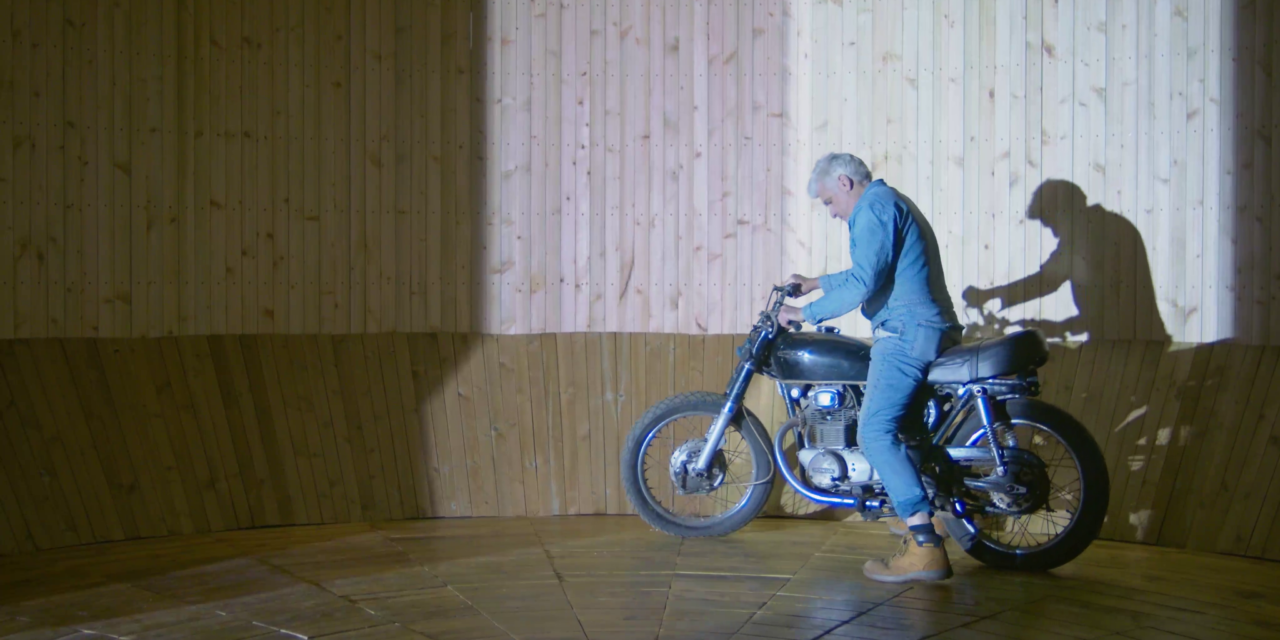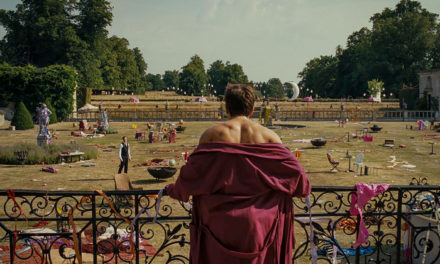A wall of death is the cylindrical stage in which motorcyclists horizontally traverse its wooden tire marked walls at top speeds. You would have seen one at a carnival or fairground, perhaps if you lived in Coney Island in the 1930s. Riders centrifugal momentary defiance of physics is gawked at by onlookers witnessing the spectacle from above, secretly hoping for something to go terribly wrong. The event proves to be both poetic and visually arresting in Maurice O’Briens documentary ‘The Artist and The Wall Of Death’.
Glasgow visual artist Stephen Skrynka is enraptured by the wall of death. Skrynka is a soft spoken, unassuming man in his 50s, living a suburban life as a father of two in Hyndland. When we meet him he is rummaging through a bin, retrieving empty bottles of hooch to use for an art installation. “I’ve never made much money from art”, confides Skrynka. The battle between commerce and artistic necessity is the central dynamo of the piece as Skrynka attempts to create his own wall of death, an idea so strange it is guided purely by impulse.
“The battle between commerce and artistic necessity is the central dynamo of the piece as Skrynka attempts to create his own wall of death, an idea so strange it is guided purely by impulse.”
Skrynka ends up building his Wall Of Death in Barclay Curle House, an abandoned shipbuilding warehouse just off the Clyde. Lockdown has just begun and he devotes his time to labouring over woodwork, transferring lumber from his makeshift studio in his garden to the shipyard. The third act of the film plays out as a sort of insane version of grand designs as Skrynka, with help from locals (including a monetary cameo from Belle and Sebastian’s Sarah Martin), build a replica of the Wall Of Death to be used as a gallery and cinema space. It is a beautiful image of one mans weird obsession reshaping itself into a piece of community outreach, one that transcends the giddy showmanship of a circus act to becoming something much more profoundly human.
Skrynka struggles to perform the feat himself, falling off the bike multiple times whilst an audience hovers above him. He embarrasses himself over and over in order to do something no one expects of him. Only to get back on the bike time and again based on some sort of otherworldly desire to achieve a bizarre, purposeless endeavour driven by unexamined self-expression. The entire image functions much more as an allegory of the artistic pursuit in general.





